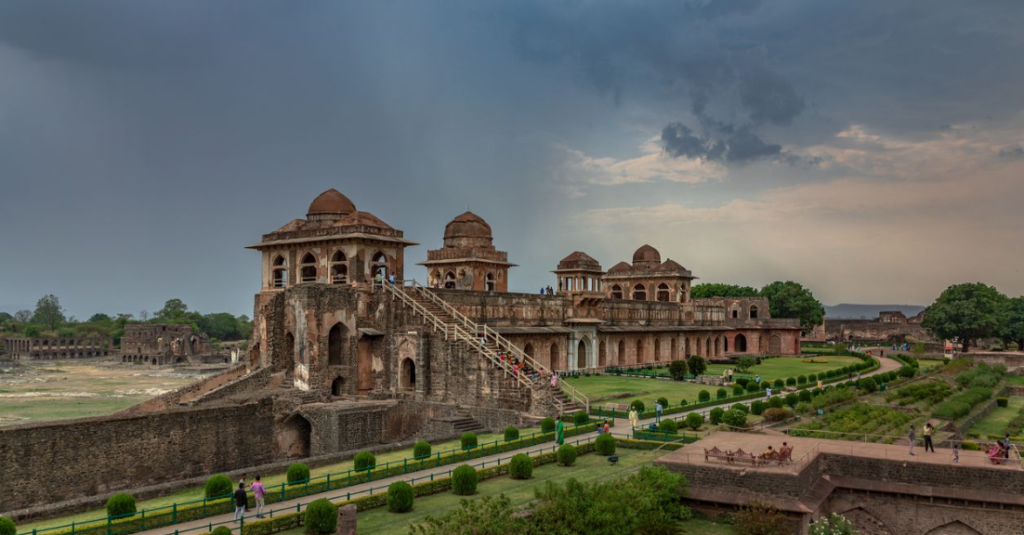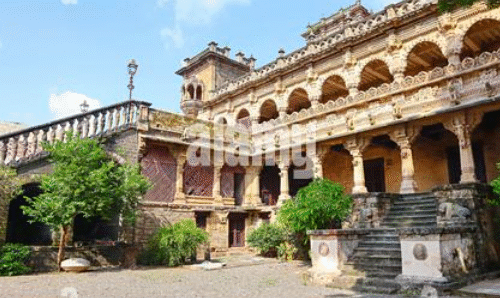Mandu Fort History, located in Madhya Pradesh, India, is a testament to the rich history and architectural brilliance of the region. Mandu, also known as Mandav, has a history that dates back to the 11th century. The design of Mandu Fort is a harmonious blend of Islamic and Hindu architectural styles, reflecting the region’s diverse cultural heritage.
Introduction of Mandu Fort History
Mandu Fort History, located in Madhya Pradesh, India, is a testament to the rich history and architectural brilliance of the region. This ancient fort complex, perched atop the Vindhya Range, offers a unique blend of history, culture, and architectural marvels. Its strategic location and impressive structures make it a significant landmark in Indian heritage.

History of Mandu Fort History
Mandu, also known as Mandav, has a history that dates back to the 11th century. Initially, it was a fortified city under the Paramara dynasty. The fort gained prominence during the 14th and 15th centuries under the rule of the Delhi Sultanate and later the Malwa Sultanate. The fort’s strategic location made it a coveted prize for various rulers over the centuries. Notably, it was during the reign of Hoshang Shah in the 15th century that Mandu saw significant architectural developments.
Bithoor Fort – A Symbol of History and Courage
Location of Mandu Fort History
Mandu Fort is situated in the Malwa region of Madhya Pradesh, approximately 100 kilometers from Indore. The fort complex is spread over a vast area, encompassing several monuments, palaces, mosques, and temples. Its elevated position offers panoramic views of the surrounding landscape, adding to its strategic importance.
Design and Layout Mandu Fort History
The design of Mandu Fort is a harmonious blend of Islamic and Hindu architectural styles, reflecting the region’s diverse cultural heritage. The fort is encircled by a 45-kilometer-long wall with 12 gates, each with its unique architectural features. The layout includes several distinct sections, such as the Royal Enclave, the Jahaz Mahal, and the Hindola Mahal, each serving specific purposes during the fort’s prime.

Architectural Highlights
Jahaz Mahal (Ship Palace)
The Jahaz Mahal is a two-story palace situated between two artificial lakes. Its design gives the illusion of a ship floating on water, hence the name “Ship Palace.” Built during the reign of Sultan Ghiyas-ud-din Khilji, it served as a harem for the sultan. The palace’s architecture showcases the grandeur of the era, with intricate carvings and expansive courtyards.
Hindola Mahal (Swing Palace)
The Hindola Mahal, named for its sloping side walls that resemble a swing, was constructed during the 15th century. Believed to have been used as an audience chamber, the palace’s unique design features arched openings and a T-shaped layout. Its architectural style is a fine example of the fusion of Islamic and indigenous designs.
Hoshang Shah’s Tomb
Hoshang Shah’s Tomb is India’s first marble structure and a significant example of Afghan architecture. The tomb’s design, with its beautifully proportioned dome and intricate marble lattice work, is said to have inspired the construction of the Taj Mahal. The tomb’s serene ambiance and architectural elegance make it a notable landmark within the fort complex.
Jami Masjid
The Jami Masjid, constructed in 1454, is one of the largest mosques in Mandu. Inspired by the Great Mosque of Damascus, it features a massive dome and expansive courtyards. The mosque’s architectural simplicity, combined with its grandeur, reflects the Islamic architectural principles of the time.
Ashrafi Mahal
Ashrafi Mahal, also known as the Palace of Gold Coins, was built by Mahmud Shah Khilji. Initially intended as a madrassa, it was later converted into a palace. The structure’s remains today offer a glimpse into the opulence that once characterized the fort’s royal quarters.

Water Management System
Mandu Fort’s architecture includes an advanced water management system, showcasing the engineering prowess of its builders. The complex houses over 1,200 water tanks, stepwells, underground channels, and rooftop reservoirs. These systems were designed to ensure a steady water supply to the fort’s inhabitants, reflecting the importance of water conservation in historical architecture.
Cultural Significance
Beyond its architectural grandeur, Mandu Fort holds cultural and historical significance. It is associated with the legendary love story of Baz Bahadur and Rani Roopmati. The fort’s structures, such as the Baz Bahadur Palace and the Roopmati Pavilion, are linked to this tale, adding a romantic dimension to its history. The fort also houses several Jain temples, reflecting the region’s religious diversity.
Conclusion
Mandu Fort stands as a monumental testament to India’s rich history and architectural brilliance. Its strategic location, unique design, and cultural significance make it a must-visit destination for history enthusiasts and architecture aficionados. Exploring Mandu Fort offers a journey through time, providing insights into the grandeur of India’s past. Read More


